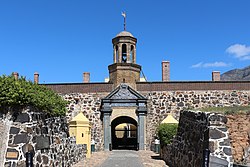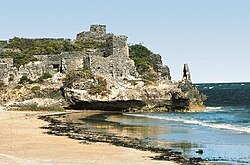This list of castles in Africa includes castles, forts, and mock castles in Africa.
Contents
- Angola
- Egypt
- Ethiopia
- Gambia
- Ghana
- Kenya
- Libya
- Madagascar
- Mozambique
- Namibia
- Nigeria
- Senegal
- Sierra Leone
- Somalia
- South Africa
- Sudan
- Tanzania
- Tunisia
- Zambia
- Zimbabwe
- References










